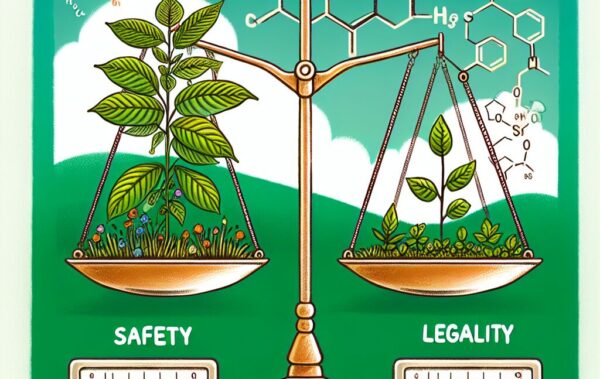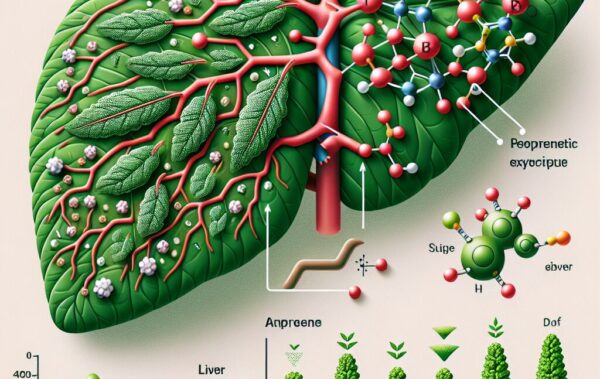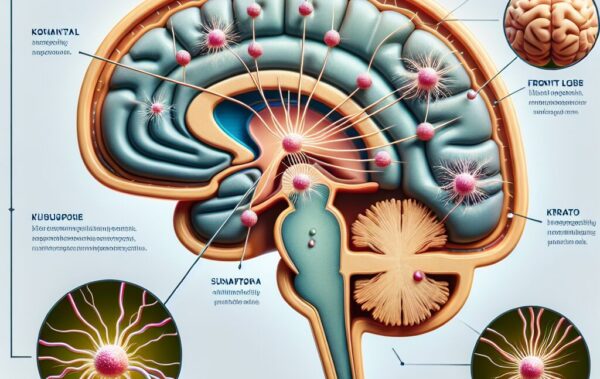- Understanding Kratom and Its Active Compounds
- Historical Use of Kratom in Traditional Medicine
- Contemporary Applications of Kratom in Holistic Healing
- Safety and Regulatory Considerations for Kratom Therapy
- Frequently Asked Questions About Kratom Use
Kratom, a tropical evergreen tree native to Southeast Asia, has garnered attention for its distinctive chemical profile and potential therapeutic effects. Known scientifically as Mitragyna speciosa, the plant’s leaves contain a rich array of alkaloids—the most notable being mitragynine and 7-hydroxymitragynine. These compounds are primarily responsible for Kratom’s effects on the human body and have become a subject of interest for both traditional and alternative medicine practices.
The active alkaloids found in Kratom work on opioid receptors in the brain, but with a complexity that distinguishes them from classical opioids. This interaction is central to understanding Kratom’s influence and potential as an herbal remedy. Unlike opioids, which can be highly addictive and carry a significant risk of overdose, Kratom’s alkaloids appear to produce milder effects, leading many to view it as a safer alternative for managing pain and stress.
Consumers can choose from a variety of Kratom products, which are often classified by vein color and geographical origin. Each variety is said to offer slightly different effects—ranging from energizing to sedating. For instance, white vein Kratom strains are often sought after for their stimulating properties, while red vein strains are prized for their relaxing effects. Our Kratom shop page provides a diverse selection, catering to different preferences and needs.
The holistic therapy community is particularly interested in Kratom for its dual stimulant and sedative properties, depending on the dose. At low dosages, the herb acts as a stimulant, helping to enhance focus and energy, much like coffee—a plant to which Kratom is also related. As the dosage increases, Kratom can have more sedative effects, lending to its use in easing conditions like anxiety and chronic pain. It’s essential to note that the efficacy and safety of Kratom can vary significantly, and understanding the correct dosing is vital for risk mitigation. For a precise and measured approach to dosage, customers might consider using digital scales available in our Kratom tea supplies category.
Now, when it comes to accessing these various Kratom products, options are abundant. Enthusiasts can choose from raw Kratom powders, convenient capsules, potent extracts, or even edibles and beverages. These can cater to diverse lifestyle requirements and personal tastes, be it the subtlety of tea or the quick convenience of a shot or capsule.
In holistic therapy, the incorporation of herbal remedies like Kratom is part of a broader approach to wellness that emphasizes natural, often plant-based, substances in balancing health. Advocates of this method suggest that plants like Kratom, used correctly, can align well with the holistic view of fostering wellness across physical, emotional, and mental health spheres. However, while Kratom’s potential becomes increasingly recognized, its use remains a point of contention within the scientific and regulatory spaces, underscoring the need for continued research and discussion to fully understand its place within the realm of holistic therapies and alternative medicine.
Historical Use of Kratom in Traditional Medicine
Kratom has a centuries-long history ingrained within traditional medicine, particularly in the areas where it naturally thrives in Southeast Asia. For generations, laborers and villagers have turned to the leaves of the Mitragyna speciosa tree— known colloquially as Kratom— for its medicinal properties. Reaching for Kratom was as commonplace as one might reach for a cup of tea or coffee, primarily because of its ability to fight fatigue and provide energy throughout the workday.
Beyond mere anecdotal accounts, historical use of Kratom in traditional medicine is rich with various applications. Herbalists and traditional healers have utilized it to alleviate a multitude of ailments. It was common to chew raw leaves for quick relief from minor pain or brew the leaves into teas for more chronic conditions, demonstrating the versatility of this herbal remedy. Its role as a natural remedy in these communities underscores Kratom’s potential applicability within the framework of holistic therapy today.
Kratom’s historical use extended to more than just pain management. In some cultures, it was considered a valuable aid in overcoming dependence on opiates, which is an intriguing parallel to contemporary discussions on Kratom’s utility in opioid withdrawal therapies. Even though historical practices lacked the scientific rigor of modern standards, they built a foundation that today’s advocates of Kratom as an alternative medicine aim to explore and validate.
The process for preparing Kratom in these indigenous traditions differed significantly from today’s precise methods and measured doses. For instance, leaves were sometimes ground into a fine powder, not unlike the Kratom powder found on the market today, albeit without the advanced processing techniques and quality control measures. This leap from traditional to modern use poses questions about dosing and potency that researchers are currently investigating.
Transitioning into contemporary applications, the modern holistic therapy community considers these historical uses when positing Kratom as a potential asset in natural health regimens. One might stumble upon a user or practitioner who opts for Kratom tea bags to meld tradition with convenience, carrying forward the age-old practice of consuming Kratom in tea form.
In traditional healing, a holistic view of the individual often embeds the environment, lifestyle, and emotional state into the treatment approach. The historical tapestry of Kratom use aligns comfortably with this paradigm, reinforcing the interest of contemporary practitioners in exploring its potential. However, it must be emphasized that much of the historical significance is steeped in tradition rather than clinical evidence. Consequently, its past use should be a guidepost for rigorous exploration rather than an endpoint for the herb’s potential in modern medicine.
In summary, the historical use of Kratom in traditional medicine presents an intriguing case for its potential applications within holistic therapies. It offers insights into how this ancient herbal remedy has been respected and utilized by different cultures over the centuries, providing a rich background against which current practices can be measured and refined.
Contemporary Applications of Kratom in Holistic Healing
In the realm of holistic healing, Kratom is now gaining traction as a versatile herbal remedy. One reason for this is its potential for synergy within a multifaceted therapeutic plan. Holistic therapy aims to treat the individual as a whole, addressing the physical, mental, and spiritual aspects of health. In this approach, the natural properties of Kratom may serve to complement other therapeutic practices such as meditation, yoga, acupuncture, and a balanced diet.
For example, individuals suffering from chronic pain, who pursue holistic therapy, may integrate Kratom as part of their pain management strategy. Given its analgesic properties, it could provide relief while they also work on strengthening their bodies through physical therapy and improving their dietary habits. This multifaceted approach is key—no single remedy is seen as a cure-all. Instead, it’s the collective impact of various natural therapies that aims to bring the body back to a state of health.
Kratom also holds promise for those seeking alternative ways to manage mood disorders. Some users have reported beneficial effects on their anxiety and depression symptoms. While these experiences are currently more anecdotal than evidence-based, they point towards a need for more research in this area. The fascinating aspect of Kratom’s effect on mood lies in the dose-dependent outcomes—where low doses may uplift and energize, while higher doses may have a more calming and sedative effect. For holistic therapy practitioners, this adaptability is attractive because it can be tailored to each individual’s unique symptomatic needs.
Furthermore, as societies become more conscious of mental health, alternative medicine and herbal remedies like Kratom offer non-pharmaceutical options for achieving a sense of balance and well-being. This is particularly appealing to those wary of the long-term impacts of conventional psychiatric medications. However, it is crucial to remember that Kratom should not replace traditional medical treatments without the guidance of a healthcare professional.
Delving into the available forms, Kratom can be consumed in various ways, whether ingested through capsules for ease and discretion or sipped as a tea for a soothing ritual. For those with a more active lifestyle, incorporating Kratom shots might be an effective way to experience its energizing effects. Meanwhile, Kratom liquid extracts offer a potent and convenient option for those needing a more significant impact from smaller dosages.
| Kratom Form | Common Use in Holistic Therapy |
|---|---|
| Capsules | Controlled dosing, convenience, and discretion |
| Tea | Ritualistic, soothing, and can be calming or energizing |
| Shots | Quick and potent effects, favored for energy |
| Liquid Extracts | High potency in small doses, providing strong effects |
The tableau of contemporary applications of Kratom in holistic healing is intriguing, but it must be stressed that individual experiences with the herb can vary widely. As with any substance that affects the body and mind, individual responses can range from significantly beneficial to indifferent or even adverse. Therefore, anyone interested in incorporating Kratom into their holistic therapy regimen should proceed with caution, ideally under the guidance of a knowledgeable practitioner.
The question of how to effectively and safely integrate Kratom into holistic therapies is complex. While advocates champion its multifaceted uses, the medical community calls for more thorough research to substantiate these claims. Discussion around this substance often hinges on the need for further evidence to define its role alongside accepted holistic practices with better-known safety and efficacy profiles.
In summary, Kratom’s contemporary applications in holistic healing showcase the herb’s potential as a multifunctional tool in the natural health toolbox. It offers a bridge between traditional uses and modern wellness aspirations but must be considered with a thoughtful, well-informed, and cautious approach. It’s an emblem of the age-old quest to find balance and healing through nature’s bounty, propelling the conversation forward about Herbal Remedies and Alternative Medicine in today’s health-conscious society.
Safety and Regulatory Considerations for Kratom Therapy
 As individuals continue to explore the boundaries of natural health and holistic therapy, Kratom’s ascent as an herbal remedy of interest is matched by a growing need to address safety and regulatory concerns. Given its dynamic impact on the human body, caution must be the watchword when considering Kratom therapy. Ranging from potential side effects to the necessity of proper dosing, the parameters for safe use are multifaceted and deserve thoughtful attention.
As individuals continue to explore the boundaries of natural health and holistic therapy, Kratom’s ascent as an herbal remedy of interest is matched by a growing need to address safety and regulatory concerns. Given its dynamic impact on the human body, caution must be the watchword when considering Kratom therapy. Ranging from potential side effects to the necessity of proper dosing, the parameters for safe use are multifaceted and deserve thoughtful attention.
For starters, the proficient use of Kratom is highly dependent on accurate dosage. This is because its effects are dose-specific; lower doses might produce a stimulatory effect, and higher doses, a sedative response. To assist users in achieving the desired outcome, digital scales can be invaluable tools for ensuring precision and preventing accidental overuse.
As with any substance that interacts with the body’s natural chemistry, the potential for side effects exists. Users might experience nausea, constipation, or dizziness, particularly if doses are not managed properly. Education on these risks, alongside responsible consumption practices, are critical components in the use of Kratom within any alternative medicine framework.
The question of dependency is another notable concern. Although the risk of addiction is generally perceived to be lower than that of traditional opioids, the potential still exists, especially with prolonged and frequent use. Recognizing the signs of dependency and maintaining a disciplined approach to consumption is essential for integrating Kratom into a healthy lifestyle responsibly.
Beyond personal safety, one must navigate a fluctuating regulatory landscape. The legal status of Kratom varies widely, with some regions embracing it as a legal supplement, while others relegate it to a controlled substance. Users must remain informed of the laws in their area, underscoring the necessity to remain vigilant and compliant with local regulations.
Researchers and policymakers continue to debate Kratom’s place in society. As such, holistic health advocates and Kratom users alike are encouraged to follow emerging studies and regulatory updates, which may impact the availability and recommended use of this herb. To this end, Kratom shop pages and related resources may provide updates as well as a platform for acquiring legal products.
In conclusion, incorporating Kratom into a holistic therapy regimen requires a fine balance of knowledge, care, and attention to legal considerations. While it holds promise as an herbal remedy in alternative medicine, it comes with its own set of complexities that must be thoroughly understood by both practitioners and users. As the Kratom landscape evolves, so too should the discourse around its safe and effective use.
Frequently Asked Questions About Kratom Use
Frequently Asked Questions About Kratom Use
- How can I determine the right Kratom dosage for me?
- Finding the appropriate Kratom dosage can depend on several factors, including your individual health goals, weight, and tolerance. Start with smaller amounts—an approach often referred to as ‘low and slow’—and pay attention to your body’s response before deciding on adjustments. For assistance with dosage precision, an accurate digital scale is advisable.
- What are the potential side effects of using Kratom?
- Potential side effects may include nausea, headaches, dizziness, or constipation. Keeping hydrated, starting with low dosages, and not using Kratom on an empty stomach can help mitigate these effects. Of course, as with any herbal remedy, individual reactions vary.
- Where is the best place to buy quality Kratom products?
- For those looking to purchase Kratom, it’s important to choose retailers that prioritize purity and safety. Products should be well-sourced, lab-tested, and sold by reputable vendors. Our Kratom shop offers a variety of quality Kratom products that meet these standards.
- Are there alternatives to consuming Kratom powder or capsules?
- Absolutely! In addition to powders and capsules, there are more palatable options like Kratom gummies, Kratom beverages, and Kratom tea bags. These alternative forms can provide a pleasant experience for those who do not enjoy the taste of Kratom or seek more convenience.
- How might Kratom fit into a holistic therapy approach?
- In holistic therapy, Kratom can be viewed as part of a larger wellness strategy. It’s considered by some as a natural, plant-based complement to practices that promote physical and mental health balance. Yet, it’s essential to discuss incorporating Kratom into your health plan with a knowledgeable holistic health practitioner, as it’s not a one-size-fits-all solution.
Regularly seeking answers to these questions can enhance your understanding and responsible use of Kratom as an herbal remedy within the realm of alternative medicine. With the increasing popularity of natural health solutions, it’s crucial for individuals to stay informed and discerning to navigate the world of supplements and holistic therapies wisely.









